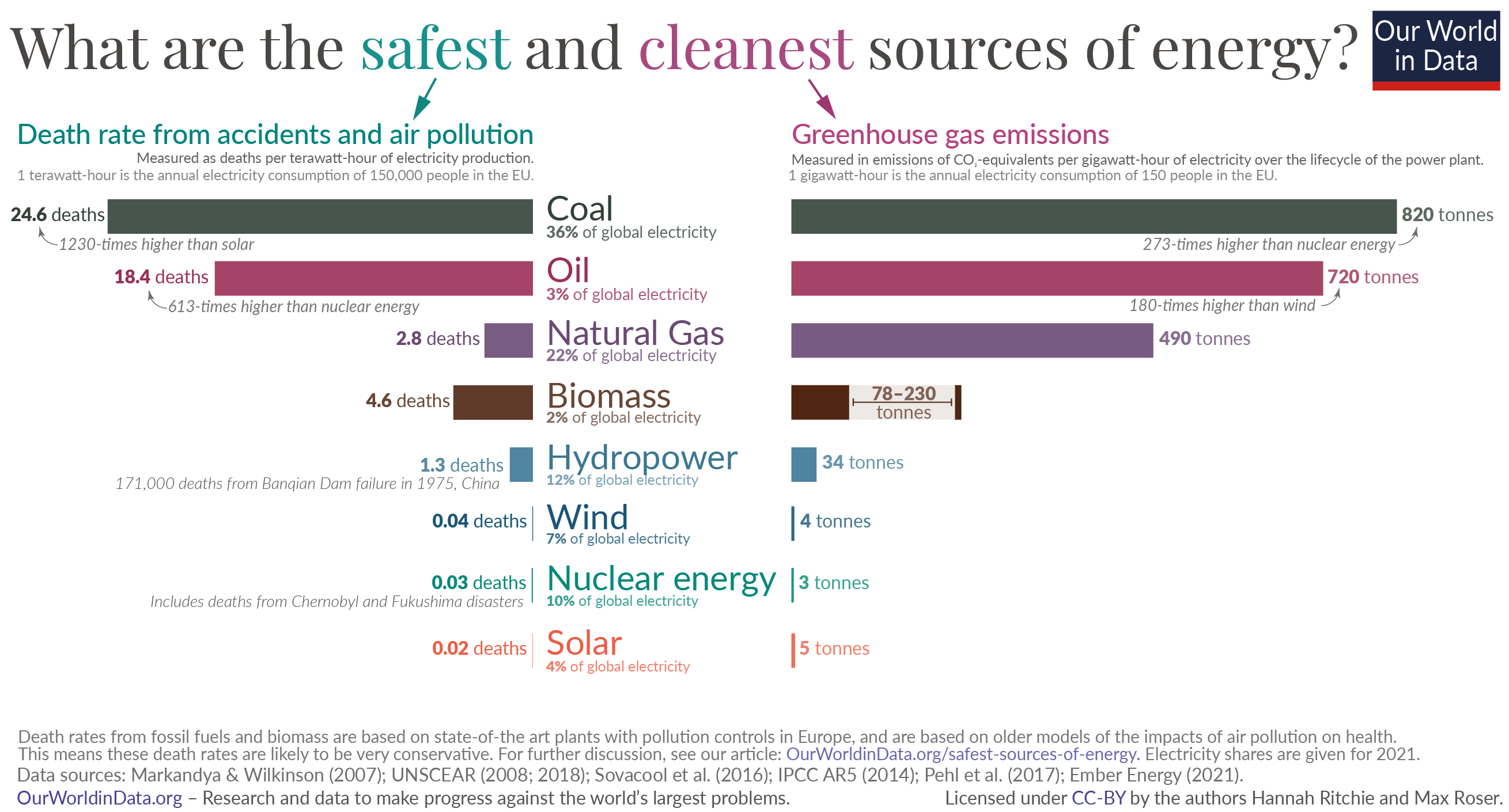![]()
By Divija Sharma |
The Hancher Auditorium was roaring with applauses the entire evening, for Bill Nye had graced the campus with his presence after postponing for years at that point. The main theme of his lecture was ‘Climate Change and Alternative Energy Sources for a Sustainable Future’. Throughout the 90 minutes, I hoped he would talk about nuclear energy as one of the cleanest energy sources out there, but he did not even mention it. So, I wrote a question asking about the future of nuclear energy in America and he expressed visible discomfort with a scrunch of his face and a shrug accompanying the brief yet adequately disappointing response, “We’ve tried but it’s too unreliable with its safety so I do not think of it as an immediate solution to the climate crisis.”
Nuclear energy is the cleanest and 2nd safest source of energy available to mankind presently. With newer designs, most power plants can have reactors that cannot physically go into core meltdown by using radioactive thorium, which is cheaper and more plentiful, to replace uranium. The non-uranium waste does not take decades to degrade and can be stored and recycled easily. All these factors make nuclear energy suitable for a future where we are actively trying to undo the widespread pollution and growing towards a more energy efficient technological landscape.

However, the public and even a science communicator hold plenty of apprehensions about nuclear energy making it a controversial issue in our society. Any piece of vocabulary involving the words ‘nuclear’ and/or ‘radioactive’ is bound to elicit negative emotions (mostly fear) from many people. The association, firmly established to its implicit status by media’s repetitive chants of the danger anything ‘nuclear’ brings, is hard to unlearn.
To address such a controversial matter in science, one must provide an insight into our thought processes like implicit associations first and then follow with facts. Covering up or trying to erase pre-existing notions about nuclear energy would have been a futile quest so deconstructing the opposing argument apart should be the ideal strategy. Yes, the Chernobyl nuclear reactor witnessed some disastrous conditions but around 60 deaths were recorded in all the decades following it which is less than the number of deaths caused by extreme weather in the States in 2020.
It is also important to concede to ensure the other person does not defensively shut down on listening – I understand that the indirect death toll is debated upon and paranoia may have led to people avoiding the areas altogether. However, these incidents are easily remembered because they are relatively rare occurrences which are isolated in their timeframe compared to the continuous harms and uncountable deaths from coal and fossil fuel burning.
In addition to all this, one must always be armored with anecdotes and analogies. Narrative grips people. I usually talk about villages in my home state in India being powered by a local nuclear plant. This idea of power production from nuclear fission came from the makings of a weapon of mass destruction – the atomic bomb, but the fertilizers that have led to enough grain production for the world came out of Nazi research on nitrogenous gases. Good things can have dark origin stories sometimes. Like my extensive research on nuclear energy from being displeased by Bill Nye.
What do you think are some other ways to add to dinner table discussions about nuclear reactors without stirring up too much heat? (pun unintended)
Rawatbhata Nuclear Power Plant, Rajasthan, India
Sources and useful links:
https://www.pewresearch.org/internet/interactives/public-scientists-opinion-gap/